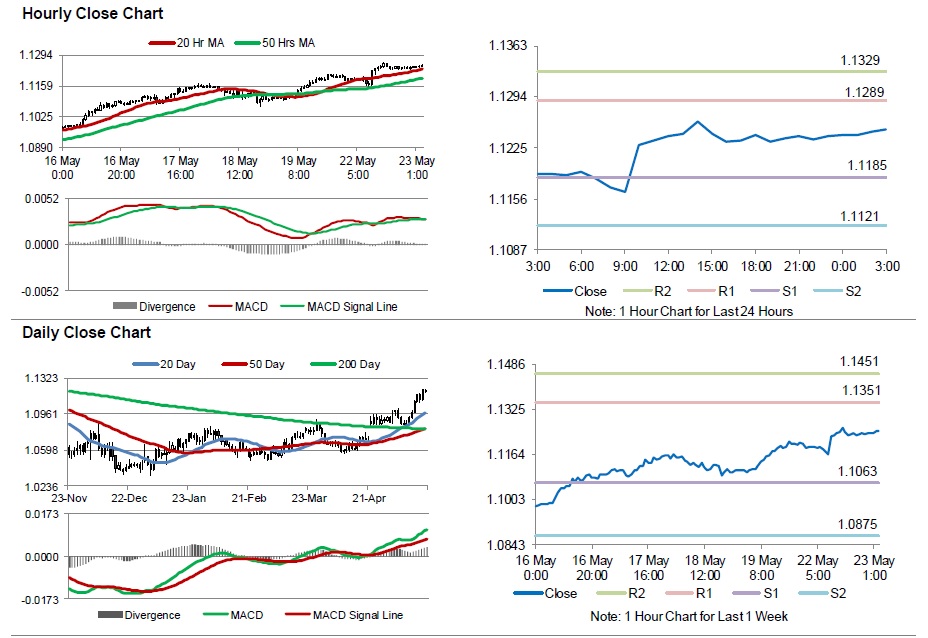For the 24 hours to 23:00 GMT, the EUR rose 0.44% against the USD and closed at 1.1240, after German Chancellor, Angela Merkel, blamed the European Central Bank’s (ECB) ultra-low interest rates and its quantitative easing programme for weakness in the Euro. However, she admitted that Germany’s trade exports have gained huge benefits from a weaker Euro.
In economic data, the Chicago Fed national activity index rose more than expected to 0.49 in April, hitting a three-year high level, suggesting an increase in production and hiring activity following a subdued first quarter. Investors had expected the index to rise to a level of 0.10 from 0.07 recorded in the previous month.
Meanwhile, the Federal Reserve Bank of Minneapolis President, Neel Kashkari, stated it is wrong to believe that the US Fed’s monetary policy can solve all the economic problems.
Separately, Federal Reserve Board Governor, Lael Brainard, commented that it is still not clear whether the nation’s economy is at full employment or there is still more slack left in the labour market.
In the Asian session, at GMT0300, the pair is trading at 1.1250, with the EUR trading 0.09% higher against the USD from yesterday’s close.
The pair is expected to find support at 1.1185, and a fall through could take it to the next support level of 1.1121. The pair is expected to find its first resistance at 1.1289, and a rise through could take it to the next resistance level of 1.1329.
Going forward, the preliminary manufacturing and services PMI data across the Euro-zone, both for May, slated for today, will be closely watched by market participants. Additionally, data on Germany’s GDP growth for the first quarter and the Ifo survey for May, will be on investors’ radar. Moreover, the US Markit manufacturing and services PMI data for May, along with new home sales figures for April, scheduled later in the day, will also garner a lot of market attention.
The currency pair is trading above its 20 Hr and 50 Hr moving averages.

